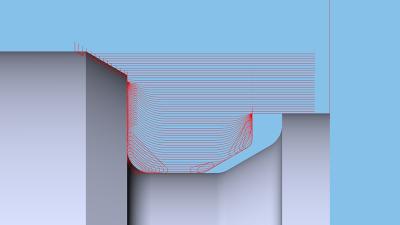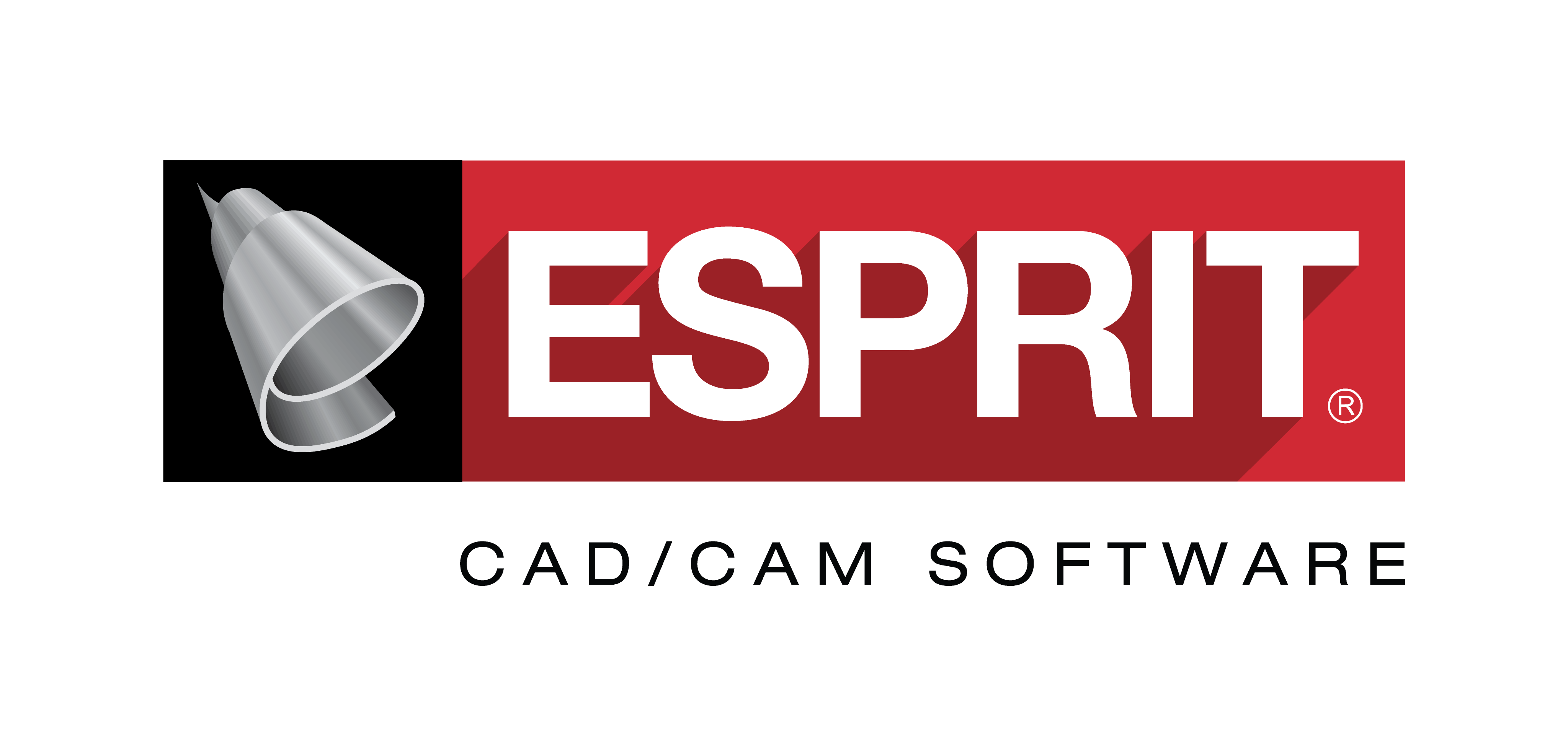
ESPRIT 2016 from DP Technology Corp. features a new innovative high speed lathe roughing strategy, called ProfitTurning that implements ESPRIT’s new physics-based cutting engine. While traditional cutting strategies only consider the geometry of the part, ProfitTurning creates the toolpath considering multiple cutting factors and machine characteristics that impact machining performance.
“ESPRIT 2016’s ProfitTurning remarkably improves chip control on hard materials, such as titanium and Inconel. In addition, ProfitTurning reduces irregular cutting forces and vibration tendencies. The net result is a drastic reduction in cycle time, up to 50 percent more compared to traditional cutting methods,” said Cedric Simard, global marketing and communication director at DP Technology.
Simulation speed also plays a pivotal role in CAM software and ESPRIT continues to be at the forefront of accelerating simulation without compromising accuracy or stability, according to the company. ESPRIT 2016 includes increased simulation speed and higher quality surface finishing saving the user valuable time. Advanced tool settings in ESPRIT 2016 provide CAM programmers enhanced tool management solutions. Additional barrel tool support has also been extended to cover more 5-axis and 3-axis cutting cycles. Furthermore, cloud-enabled ESPRIT supports the MachiningCloud app, which enables users to retrieve ideal cutting tool solutions and import them directly into ESPRIT with ease.
ESPRIT 2016 also features enhanced CAD-recognition functions to correct and detect any acute unseen defects in imported CAD models. In addition, users can now edit or remove fillets or even extract a spine curve from fillets as a tool drive curve in machining operations. The new hole-feature recognition features in ESPRIT 2016 include automatically recognizing different types of complex holes and names them accordingly. ESPRIT also measures the curvature angle of open holes, making complex drilling operations more accurate and productive.
Wire EDM improvements in ESPRIT 2016 make rough cutting easier and prolong tool life. The optional cut-off clearance in ESPRIT specifies additional clearance for cut-off moves to reduce the amount of grinding required. Another new Wire EDM feature is the optimize first cut-off, which protects the wire from rethreading where there is no predrilled thread hole.
Fluid 5-axis features in ESPRIT 2016 eliminates unwanted plunge-type moves in swarf cycles, and smooths any concealed defects in spiral finishing part surfaces. The feed rate of spiral roughing can now also be increased for noncutting moves to save cutting time. ESPRIT 2016 accelerates machining with increased simulation speed and innovative cutting strategies that save users programming time and optimize profits.
Contact Details
Related Glossary Terms
- clearance
clearance
Space provided behind a tool’s land or relief to prevent rubbing and subsequent premature deterioration of the tool. See land; relief.
- computer-aided design ( CAD)
computer-aided design ( CAD)
Product-design functions performed with the help of computers and special software.
- computer-aided manufacturing ( CAM)
computer-aided manufacturing ( CAM)
Use of computers to control machining and manufacturing processes.
- electrical-discharge machining ( EDM)
electrical-discharge machining ( EDM)
Process that vaporizes conductive materials by controlled application of pulsed electrical current that flows between a workpiece and electrode (tool) in a dielectric fluid. Permits machining shapes to tight accuracies without the internal stresses conventional machining often generates. Useful in diemaking.
- feed
feed
Rate of change of position of the tool as a whole, relative to the workpiece while cutting.
- grinding
grinding
Machining operation in which material is removed from the workpiece by a powered abrasive wheel, stone, belt, paste, sheet, compound, slurry, etc. Takes various forms: surface grinding (creates flat and/or squared surfaces); cylindrical grinding (for external cylindrical and tapered shapes, fillets, undercuts, etc.); centerless grinding; chamfering; thread and form grinding; tool and cutter grinding; offhand grinding; lapping and polishing (grinding with extremely fine grits to create ultrasmooth surfaces); honing; and disc grinding.
- lathe
lathe
Turning machine capable of sawing, milling, grinding, gear-cutting, drilling, reaming, boring, threading, facing, chamfering, grooving, knurling, spinning, parting, necking, taper-cutting, and cam- and eccentric-cutting, as well as step- and straight-turning. Comes in a variety of forms, ranging from manual to semiautomatic to fully automatic, with major types being engine lathes, turning and contouring lathes, turret lathes and numerical-control lathes. The engine lathe consists of a headstock and spindle, tailstock, bed, carriage (complete with apron) and cross slides. Features include gear- (speed) and feed-selector levers, toolpost, compound rest, lead screw and reversing lead screw, threading dial and rapid-traverse lever. Special lathe types include through-the-spindle, camshaft and crankshaft, brake drum and rotor, spinning and gun-barrel machines. Toolroom and bench lathes are used for precision work; the former for tool-and-die work and similar tasks, the latter for small workpieces (instruments, watches), normally without a power feed. Models are typically designated according to their “swing,” or the largest-diameter workpiece that can be rotated; bed length, or the distance between centers; and horsepower generated. See turning machine.
- swarf
swarf
Metal fines and grinding wheel particles generated during grinding.
- toolpath( cutter path)
toolpath( cutter path)
2-D or 3-D path generated by program code or a CAM system and followed by tool when machining a part.
- wire EDM
wire EDM
Process similar to ram electrical-discharge machining except a small-diameter copper or brass wire is used as a traveling electrode. Usually used in conjunction with a CNC and only works when a part is to be cut completely through. A common analogy is wire electrical-discharge machining is like an ultraprecise, electrical, contour-sawing operation.

